Vote Now! The Best Spaceships of All Time
Astronauts and Spaceships
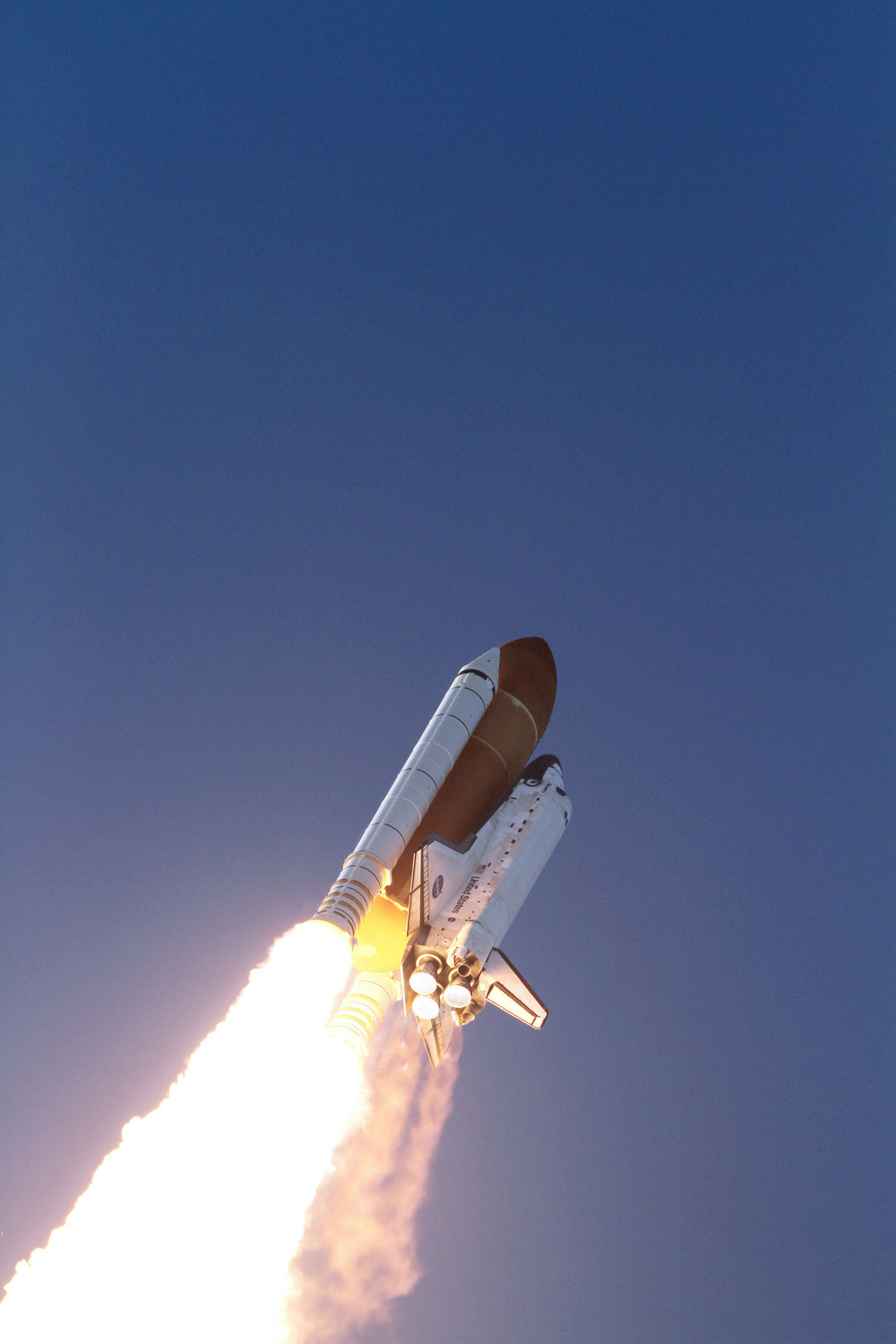
It's been nearly 50 years since cosmonaut Yuri Gagarin launched into space on April 12, 1961 to become the first emissary from Earth to soar in the void of space. But human spaceflight has come a long way in five decades and seen a veritable fleet of crewed spacecraft come and go, with new ones being built as this is written.
Vostok
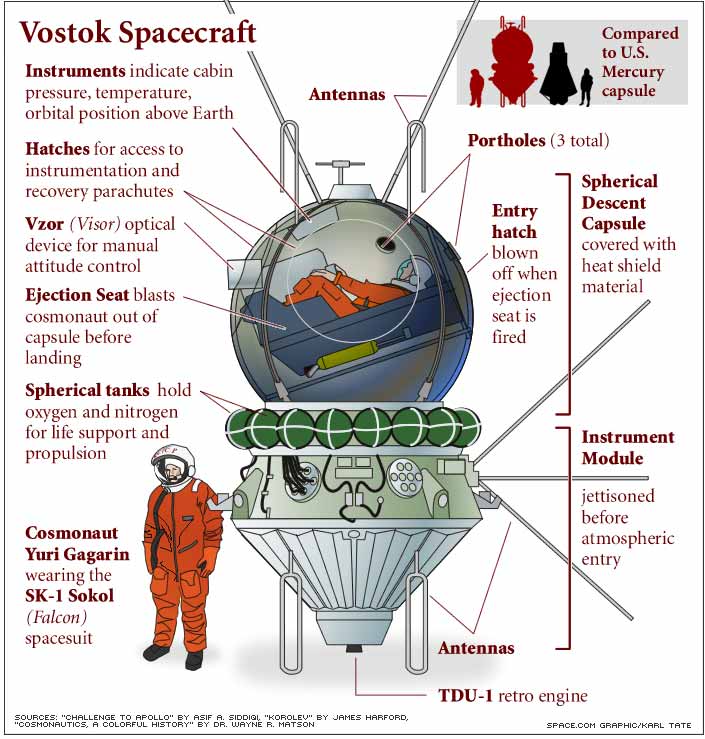
The Soviet Union's Vostok I carried the first human into space, Yuri Gagarin, on April 12, 1961, upstaging the U.S. Mercury astronauts. The spacecraft consisted of a 2.3 meter spherical cabin with attached instrument module. Further Vostok flights included Vostok 6, flown by Valentina Tereshkova, the first woman in space. After that mission, Vostok morphed into the hastily jury-rigged Voshkod capsule in 1964-1965, a radically modified three-seater which, again, trumped the two-man Gemini spacecraft.
Soyuz
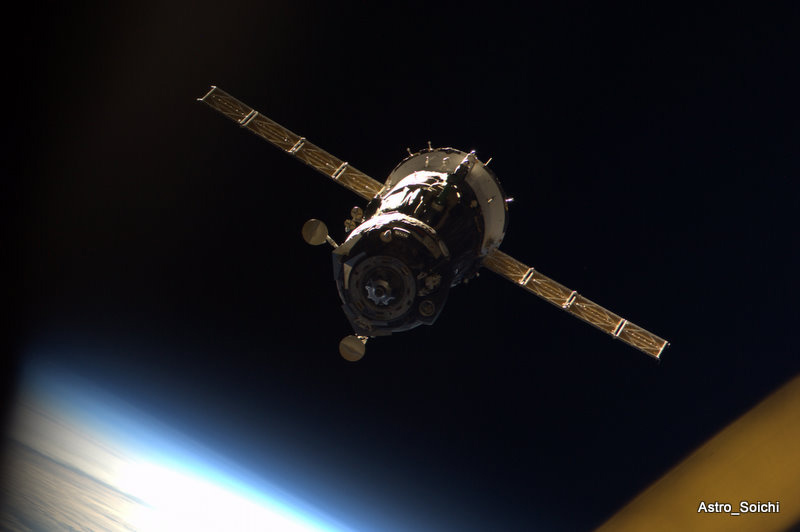
The Soyuz design began life as a planned lunar vehicle. Ultimately, it became the hardy workhorse we know today, ferrying cosmonauts to and from Earth orbit. Physically, it is easily recognized by its egg-shaped orbital module. Soyuz 1 launched on April 23, 1967, to be followed by many variants of the original design over the decades. Most recently, the Soyuz TMA-10 craft brought space tourist Charles Simonyi to the International Space Station in April of 2007, and is still docked to the ISS at the time of this writing, September 2007. (Shown here: The Soyuz TMA-6 spacecraft bearing 3 persons to the ISS.)
International Space Station
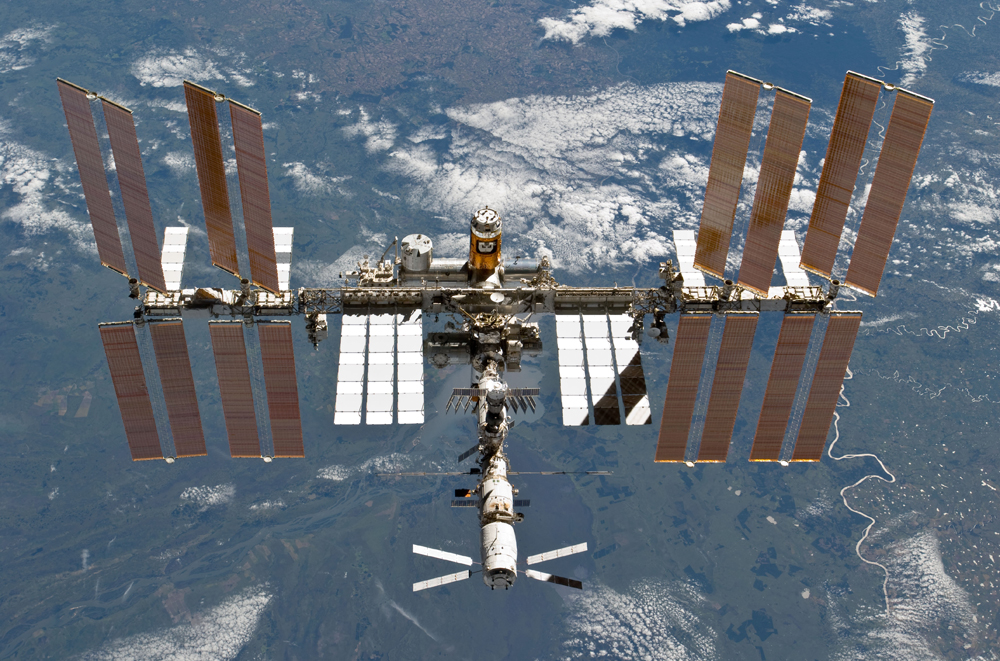
Nearly complete, the International Space Station is a $100 billion orbital outpost still under construction that will rival a U.S. football field in length, and may be visible from Earth during daylight once finished. Assembly began in 1998, and today there are 16 partner nations. Up to six astronauts will live and work in the ISS's international laboratories once finished.
Space Shuttle
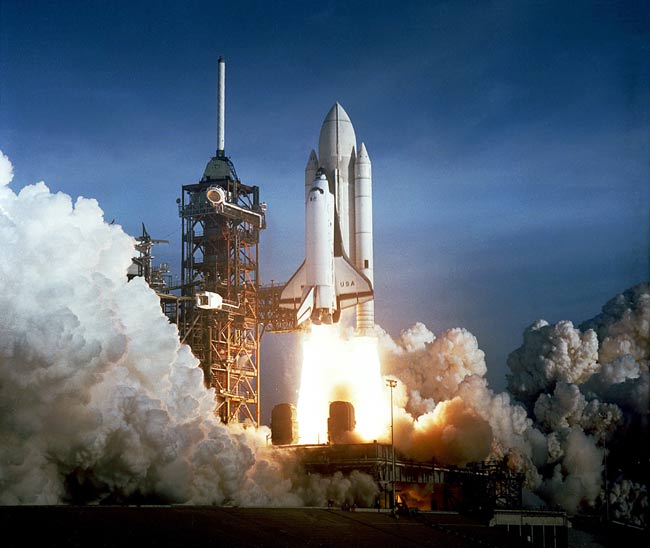
The first reusable spacecraft launched April 12, 1981 with Columbia. NASA has lost two of its five shuttles (Columbia and Challenger) in fatal disasters. Three others (Discovery, Atlantis and Endeavour) will retire in 2011. The Soviets developed their own reusable craft, Buran, which in appearance mimicked the U.S. shuttle almost eeriely. Buran flew only once, on November 15, 1988, when it spent 3.5 hours in space, orbited the earth twice, and landed, all under remote control. Sadly, it was destroyed in a hangar collapse in 2002.
Skylab
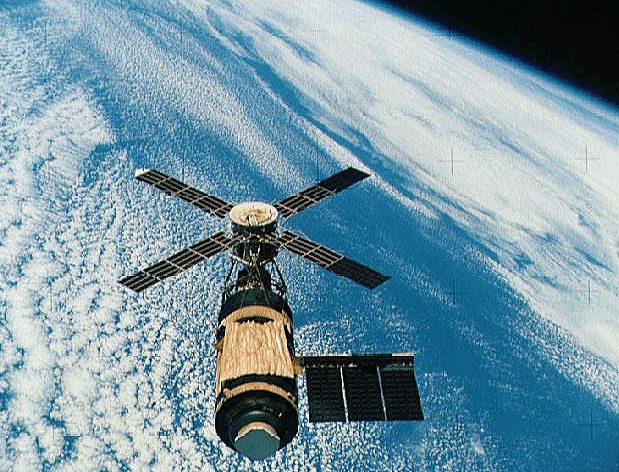
Skylab, the orbiting workshop, launched on May 14, 1973 on an unmanned rocket, to be joined by 3-person crews. On liftoff, the space station lost its meteor shield/sunshade and a solar panel, severely crippling it. The first crew, which launched May 25, 1973, gamely made repairs, and went on to set a 28-day space endurance record. This record was topped shortly by the 2nd and 3rd crews of Skylab, the former achieving 84 days in space during 1973-1974. NASA intended the station to last into the 1980's, when the Space Shuttle could mate with it. However, the shuttle fell behind schedule, and atmospheric drag took its toll, causing the much-ballyhooed fragmentary demise of Skylab over the Indian Ocean and Western Australia on July 11, 1979.
SpaceShipOne
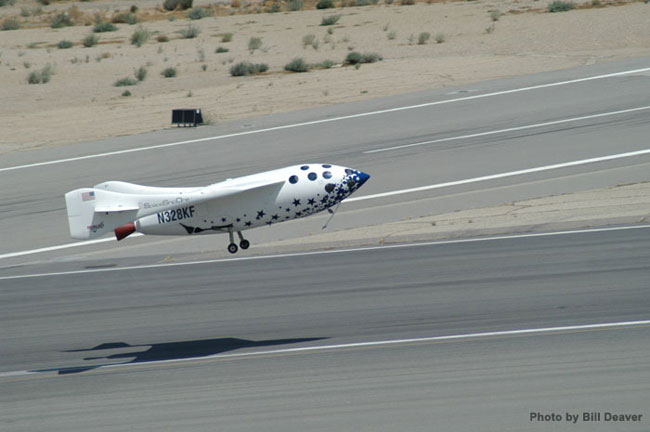
SpaceShipOne made three successful flights in 2004. Built by aerospace visionary Burt Rutan and financed by Microsoft co-founder Paul Allen, the spacecraft won the $10 million Ansari X Prize. An evolved version, SpaceShipTwo, will serve as the foundation for Virgin Galactic's fleet of suborbital space tourism vehicles. SpaceShipTwo is undergoing early flight tests, and may fly in space by the end of 2011.
Salyut Space Stations
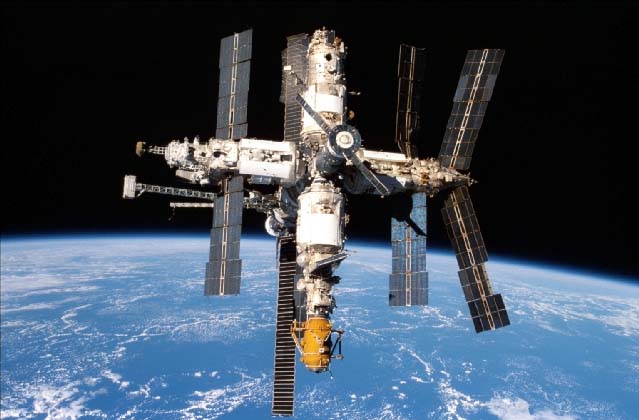
While the U.S. increased its lead in the moon race, the Soviets began a series of orbiting space stations with Salyut I, launched April 19, 1971. Salyut stations consisted of cylinders of various diameters and lengths. The program included the military stations, Salyut 2, 3, & 5, about which little is known. Later Salyut 6 (1977-1981) and Salyut 7 (1982-1986) included a "back door," a second docking port which greatly increased the flexibility of the stations to host longer stays in space. These stations paved the way for the best-known and longest-lived Soviet space station, Mir (1986-2001), shown here, which permitted the setting of many human spaceflight records. Mir's fiery deorbit came on March 21, 2001, in the Pacific Ocean.
Shenzhou
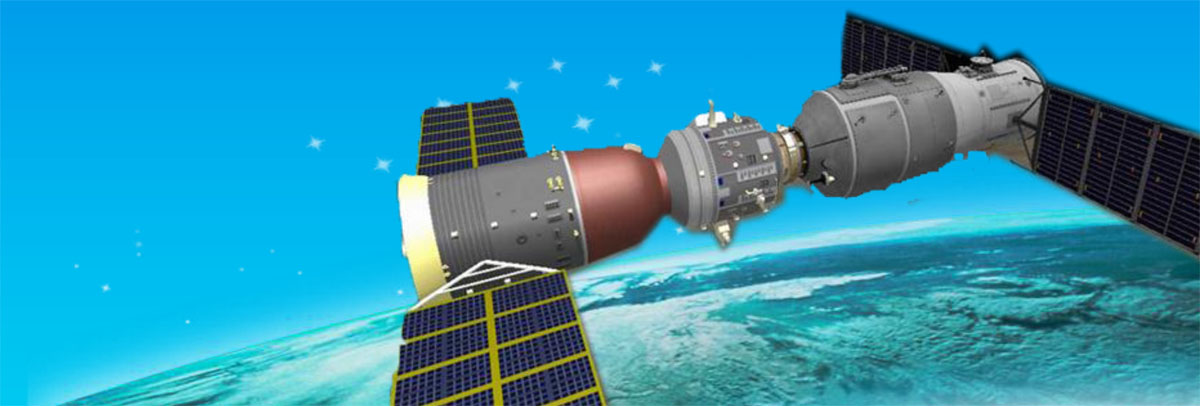
China is the only country besides Russia and the United States to build and launch spacecraft capable of carrying humans into orbit. China's Shenzhou spacecraft are based on Russia's Soyuz design, but carry several unique elements, such as an orbital module equipped with solar arrays that allow them to be left in orbit for extended periods. China has flown three manned missions since its first human spaceflight in 2003, with each flight being more ambitious than the previous one. The country is also building the hardware for its first space station Tiangong 1.
Mercury
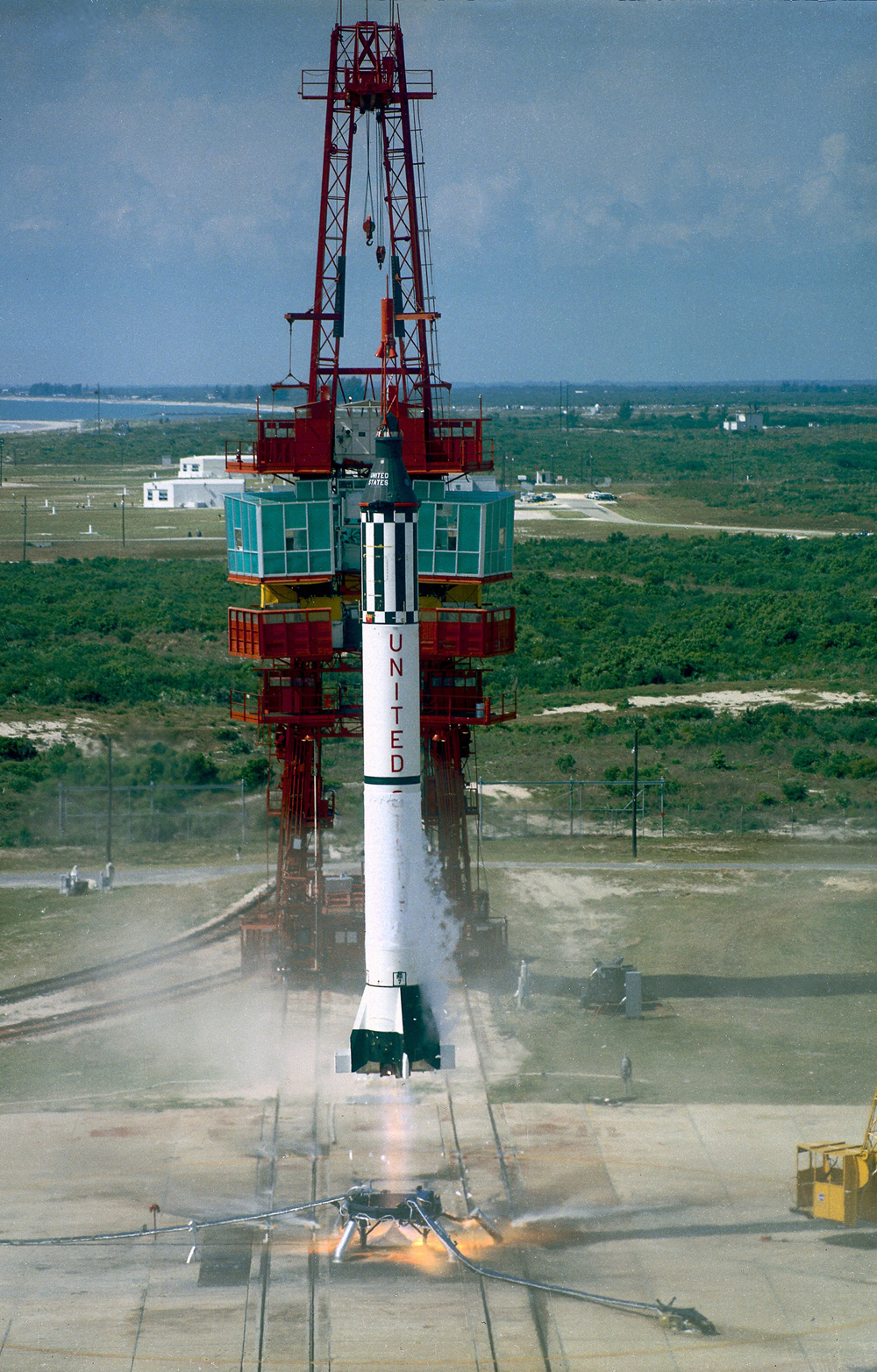
The first U.S. manned spacecraft, the Mercury capsule, was conical in shape, almost 7 feet long, and 6 feet in diameter at the wide end, a tight squeeze for its sole occupant. Alan B. Shepard took the first American space journey on May 5, 1961, followed by Virgil Grissom a few months later, then by John Glenn and his historic orbit of the earth on February 20, 1962. Three more Mercury missions continued until May 1963.
Gemini
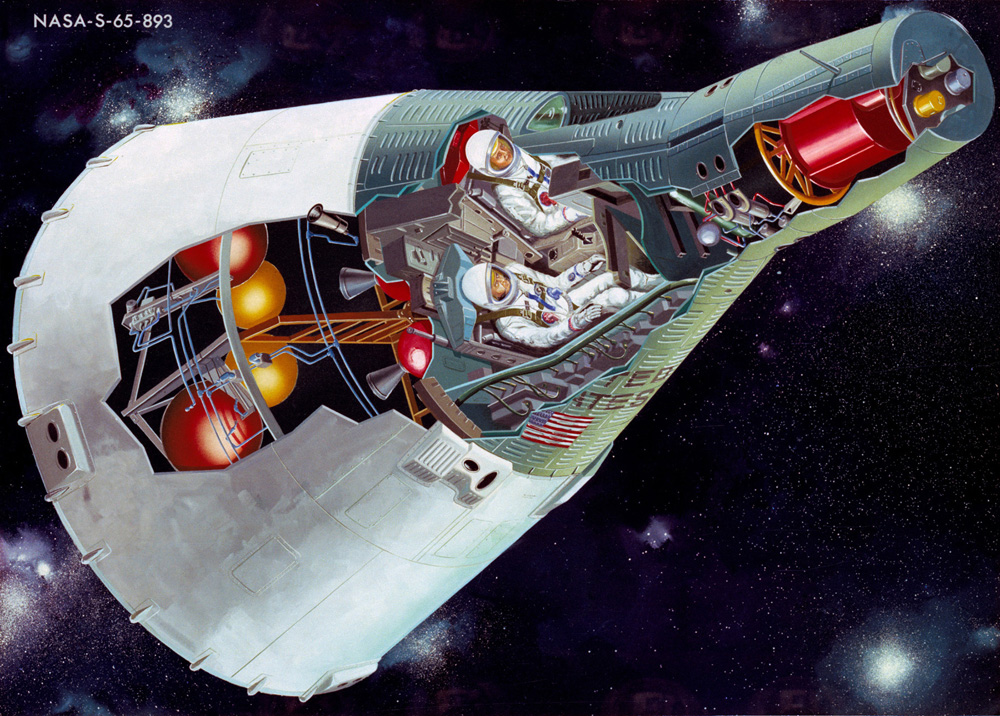
In attempting to reach the moon, NASA turned from the undersized Mercury spacecraft to the larger Gemini capsule. Twelve feet in length, the newer model consisted of a re-entry module containing two crew members, an equipment module, and the retrograde section, retaining Mercury's familiar cone shape. The 10 manned missions in 1965-1966 achieved the abilities of orbital maneuvering, rendezvous and docking, and extravehicular activity, or spacewalking.
Join our Space Forums to keep talking space on the latest missions, night sky and more! And if you have a news tip, correction or comment, let us know at: community@space.com.
Get the Space.com Newsletter
Breaking space news, the latest updates on rocket launches, skywatching events and more!

Space.com is the premier source of space exploration, innovation and astronomy news, chronicling (and celebrating) humanity's ongoing expansion across the final frontier. Originally founded in 1999, Space.com is, and always has been, the passion of writers and editors who are space fans and also trained journalists. Our current news team consists of Editor-in-Chief Tariq Malik; Editor Hanneke Weitering, Senior Space Writer Mike Wall; Senior Writer Meghan Bartels; Senior Writer Chelsea Gohd, Senior Writer Tereza Pultarova and Staff Writer Alexander Cox, focusing on e-commerce. Senior Producer Steve Spaleta oversees our space videos, with Diana Whitcroft as our Social Media Editor.
